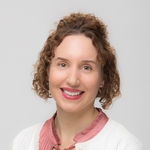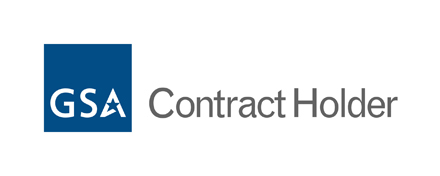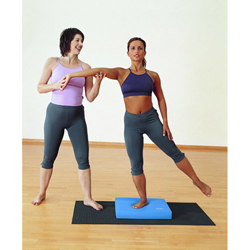Finding a calling, not just a career
“What really called me to the physical therapy profession is the fact that you’re always working for the betterment of somebody, you’re always helping somebody improve their life—and that’s on both a physical and mental plane,” she says.But the thing that made Phelps realize she wanted to be a physical therapist is the opportunity to establish a relationship with each patient, which isn’t necessarily the case with other occupations in healthcare. “Talking to your patient and getting to know them as an individual and as a person, not just a patient, is such an important part of the healing process,” Phelps says.
Searching for a better way to treat patients
After graduating from the University of Minnesota in 1981 with a B.S. in physical therapy, Phelps says she floated around for almost seven years searching for the type of treatment that would work best with her patients. “I was an enthusiastic young clinician and I took every course I could and researched every concept out there. I went through periods of treating with a Maitland approach—then Barnes, then McKenzie, then Kaltenborn—and the list goes on,” she says.Things fell into place on an unlikely trip to Aruba where Phelps attended an International Academy of Orthopedic Medicine (IAOM) conference. “I thought I already knew everything there was to know about the shoulder, so I went to this conference thinking I might learn a few things, but mainly I’d have a good time. Instead I was introduced to a whole new way of practicing and I was like—oh, wow, this is a philosophy of treatment based on anatomy that involves looking for patterns in the clinical setting and then matching treatment to the specific patient. Up until then, what I had studied involved using the same technique on every single patient,” she says.

Valerie consults with Physical Therapist Phillip Sizer in the late 90’s.
Discovering a treatment philosophy that fits
Phelps describes the IAOM approach as a concept that isn’t a one-person based program but a solid, multi-planar, anatomical approach that looks at movement, the biomechanics of the joint, the structures that cover the joint, the muscles and the myofascial structures that move the joint, and then other influences on the joint. “It’s just a really great system that looks at the whole kinetic chain,” Phelps says.When she started studying with IAOM, Phelps says it became clear that if she knew what she was treating, she could select techniques from any of the specific areas of manual therapy she had studied. “Suddenly, I had hundreds of tools to utilize based on the patient,” she says. “IAOM’s treatment philosophy is that ‘it all fits,’ and the expertise comes from knowing when to use a particular technique, and with which patient.”
Phelps was so impressed with the philosophy and the results she was seeing in the clinic that she trained to be an international instructor for IAOM in 1994. Eventually, she founded the U.S. branch of IAOM, where she serves as education director, delivering courses and lectures throughout the U.S. and Europe.

Valerie presenting at an IAOM conference.
Providing patient-centered care in the clinic and beyond
Another way that Phelps puts her patient-centered care into action is at Advanced Physical Therapy—an employee-owned practice that she founded and where she serves as practice director. With five locations throughout Alaska, the practice is made up of physical therapists, occupational therapists and massage therapists who customize treatments and provide education for patients with physical problems ranging from simple to complex, or as Phelps describes, “We treat everything from the big toe to the head.”Her quest to help people experiencing pain doesn’t stop in the treatment room. Phelps helped develop the SI-LOC® support belt after years of working with patients experiencing sacroiliac joint pathology and not having an effective support to offer them. At the time, the only support option was a brace with a large triangular pad over the sacrum, which she says didn’t make biomedical sense. This inspired her to create a more effective support belt.
“Imagine holding a cone in your hand,” explains Phelps. “When we hold an ice cream cone, we don’t have to squeeze it very hard. If we create a little ring with our hand it just snuggly fits in that ring. That’s where we came up with the idea for the SI-LOC. It’s a simple but effective ring for the wedge of the SI joint to snuggly fit into and it only needs about 20 pounds of force to stabilize the joint. The SI-LOC works beautifully as a temporary assist for external stabilization while you’re working on internal stability, which can take a few months to several years,” she says.

Valerie presents with Phillip Sizer, PT, PhD, at a conference.
Coming full circle
After almost 40 years of practicing, Phelps says she loves physical therapy as much today as she did the day she graduated. “I probably love it more now because I know how much I don’t know. When you get out of school, you think you have all the tools you need and that you’re going to get everybody better, and that it’s completely dependent on you,” Phelps says. “But it’s a process and we’re always learning. I taught a course this past weekend and some colleagues I’ve known for at least 20 years flew in from across the country. It was really nice to sit down and share what we’re doing and to continue to learn from each other.This is a profession that gives us the opportunity to learn more every year and as we discover more we understand more, allowing us to help improve patients’ lives—and that’s what I set out to do from the beginning.”
Valerie is the founder and practice director of the employee-owned clinic Advanced Physical Therapy, with locations in Anchorage, Fairbanks, the Mat-Su Valley, and the Kenai Peninsula. She also helped develop the SI-LOC® Support Belt. Learn more about the SI-LOC here.







